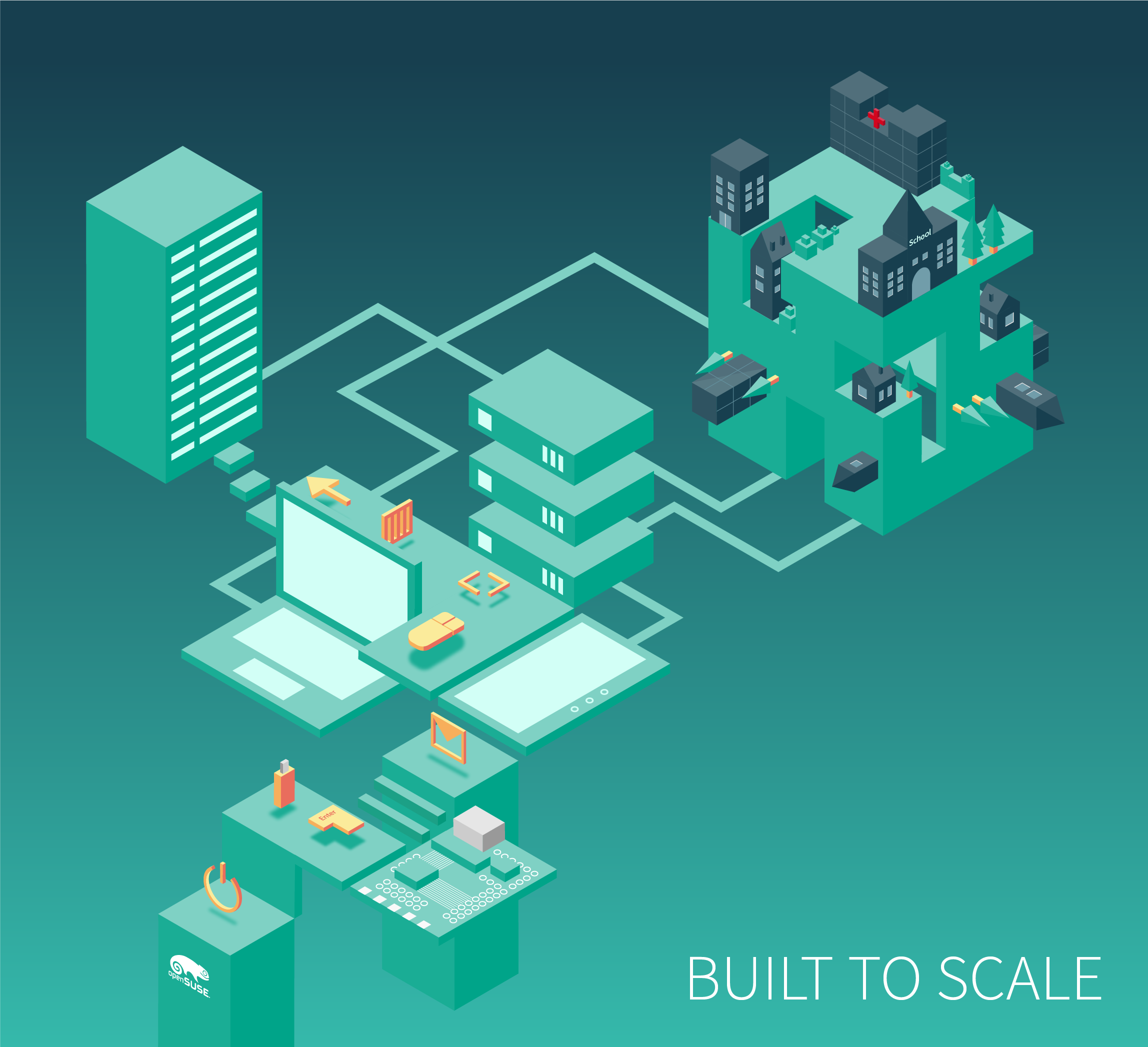Portal:15.1/Features
openSUSE Leap 15.1 is...
SUSE continues to support migration from Leap to SLE, which gives system integrators developing on Leap the possibility of moving to an enterprise version for certifications, mass deployments and/or extended Long Term Support. openSUSE Leap 15.1 brings plenty of community packages built on top of a core from SUSE Linux Enterprise (SLE) 15 Service Pack (SP) 1 sources. Leap 15.1 shares its common core with SLE 15 SP1, which is due for release in the coming months. The first release of Leap was version 42.1, and it was based on the first Service Pack (SP1) of SLE 12. Three years later SUSE’s enterprise version and openSUSE’s community version are now aligned on version 15 and 15.1.
The release has a system role selection that offers a classic server role and a Transactional Server role. Contributed by the Kubic Project, this role uses transactional updates and a Read-Only Root Filesystem to provide Leap 15.1 with the benefits of atomic updates in a multitude of use cases.
For Developers
Leap 15.1 is filled with several containerization technologies like Singularity, which bring containers and reproducibility to scientific computing and the high-performance computing (HPC) world. Singularity first appeared in the Leap distribution in Leap 42.3 and provides functionality to build smallest minimal containers and runs the containers as single application environments. Another official package in Leap 15.1 is libcontainers-common, which allows the configuration of files and manpages shared by tools that are based on the github.com/containers libraries, such as Buildah, CRI-O, Podman and Skopeo. Docker containers and tooling make building and shipping applications easy and fast. Use the package containerd to run containers according to Open Container Initiative Specifications. Flatpak and AppImage, which is software utility for software deployment, package management, and application virtualization, allow developers to provide users with Linux application that run in isolation from the rest of the system.
Leap offers about every programming language a developer can choose. Go, Rust, Haskell, C++, Ruby on Rails, Java, Python, Perl and more. Leap also has multiple libraries for developers' needs like libzypp, libvirt, glib, libstorage-ng and more. Build shared libraries with libvirt, use the set of shell scripts in libtool-testsuite or use glib as a general-purpose utility library for data types, macros, type conversions, string utilities, file utilities, a main loop abstraction, and more.
For Sysadmins
System Administrators and small businesses can use Leap for hosting web and mail servers. Sysadmins can take full advantage of the network management protocol Dynamic Host Configuration Protocol (DHCP), allocate resources of the Domain Name System (DNS) or offer client computers access files over a Network File System (NFS). File and host sharing packages like NextCloud are also available and the groupware application suite Kopano is part of the official Leap 15.1 release. Existing Leap users should find updating to Leap 15.1 seamless coming from Leap 15.0. Upgrading from previous versions of Leap are also supported. It is also worth remembering that openSUSE Leap uses Delta RPMs for all maintenance updates, ensuring that the long term bandwidth requirements for maintaining your Leap system are as small as possible.
Some of the improvements to YaST have made for better management of services. Firewalld can be managed in text mode. There is a new User Interface to manage Firewalld, including AutoYaST support/advancements. System administrators will have better control with Salt formulas in the yast2-configuration-management module, and management of SSH keys per user will make sysadmins tasks much more pleasant. YaST has an improved Partitioner, which can now directly format full disks without partition tables, create software MD RAIDs on top of full disks, create partitions within a software-defined MD RAID and many other combinations; AutoYaST supports all these combinations. The work the YaST team has put into the setup and configuration tool has a better default partitioning proposal in several scenarios like those with small disks or systems with several disks making solutions easier for Linux professionals.
For Users
This release continues to uses KDE’s Plasma 5.12 Long-Term-Support version and all its community supported tools and applications. Leap offers Live Images for the Plasma desktop, and through PackageHub, users of SLE 15 SP1, can also use Plasma 5.12 LTS.
Users of openSUSE Leap can choose their favorite desktop environment, configuration and setup. The GNOME 3.26 version in Leap 15.1 is the same as the version used in SLE 15 SP1, which uses Wayland by default. Leap offers Live Images for the GNOME desktop.
The Leap distribution supports the health, science, research and developer communities with packages like GNU Health, which can help facilitate running the operations of a hospital and collecting vital patient data, and QGIS, which allows researchers to create, edit, visualise, analyse and publish geospatial information.
This openSUSE release use Weblate to coordinate the translation of openSUSE into more than 50 languages. openSUSE’s Weblate interface enables everyone (from dedicated translators to casual contributors) to take part in the process and makes it possible to coordinate the translations of openSUSE with the ones for SUSE Linux Enterprise, boosting collaboration between community and enterprise.
